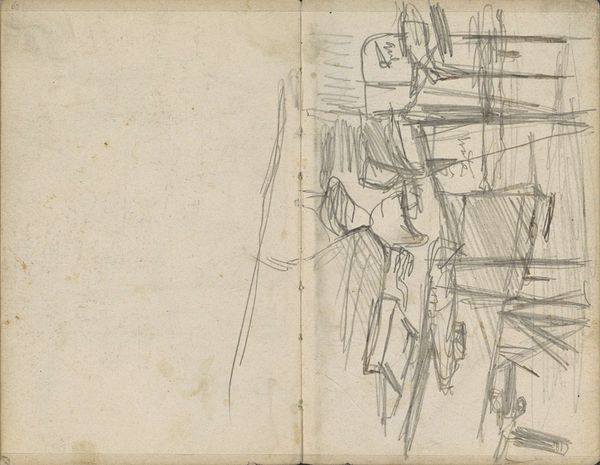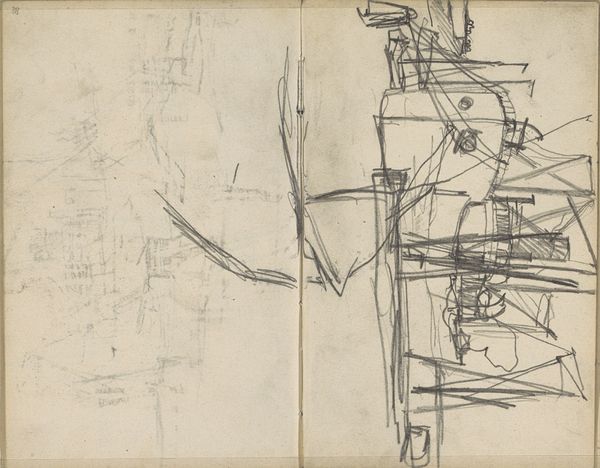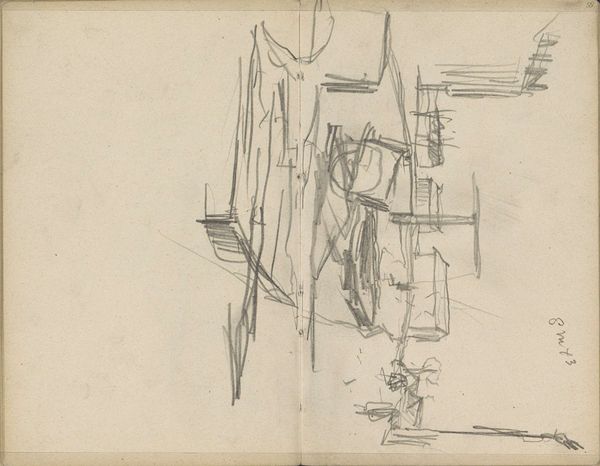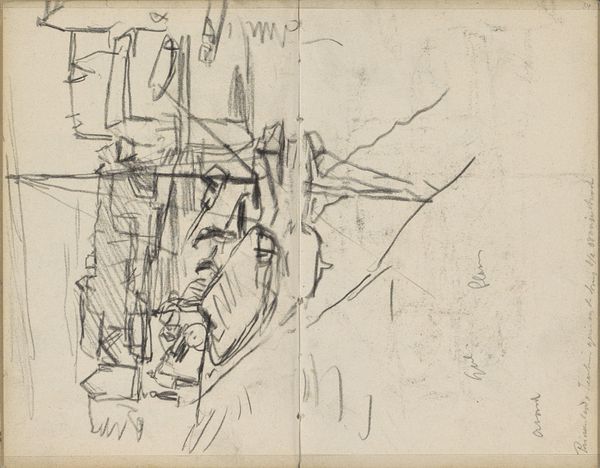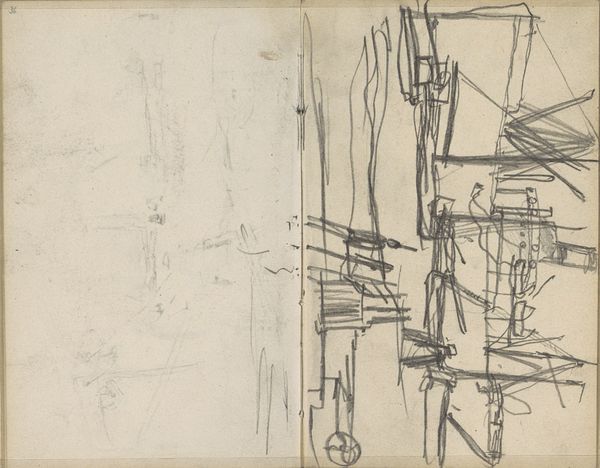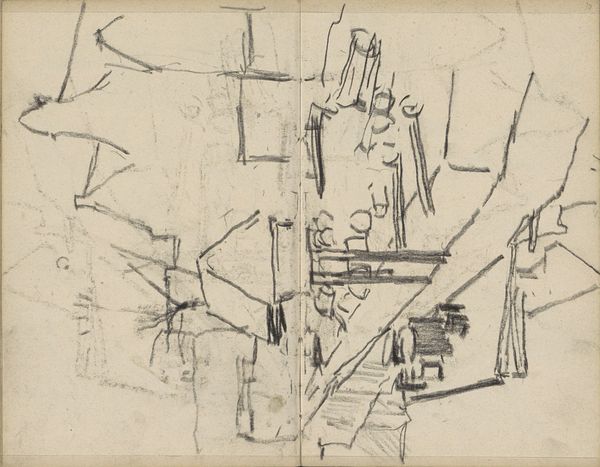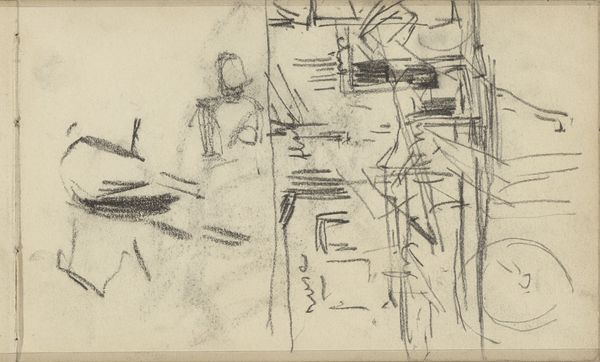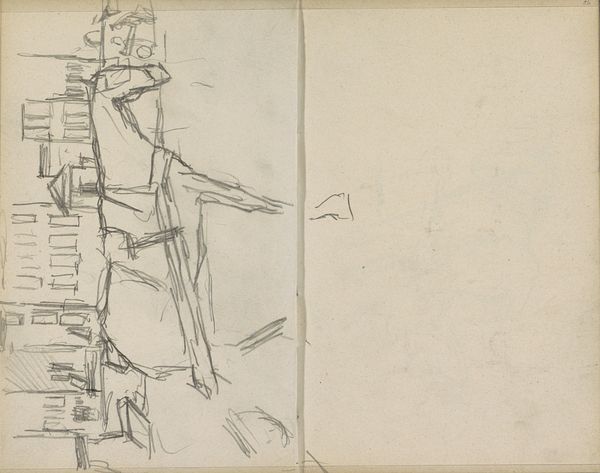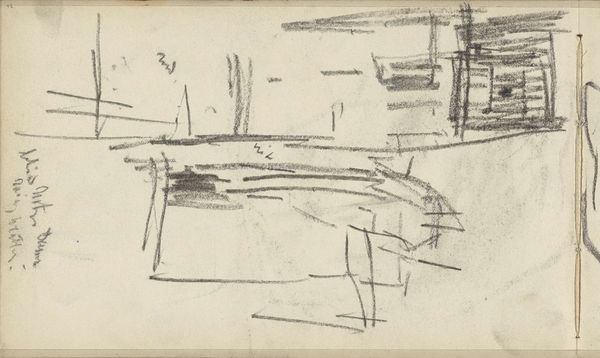
drawing, pencil
#
drawing
#
light pencil work
#
quirky sketch
#
dutch-golden-age
#
sketch book
#
personal sketchbook
#
idea generation sketch
#
sketchwork
#
pencil
#
line
#
sketchbook drawing
#
cityscape
#
storyboard and sketchbook work
#
sketchbook art
#
initial sketch
Copyright: Rijks Museum: Open Domain
Curator: Here we have "Ships on the IJ," a pencil drawing by George Hendrik Breitner, likely created between 1892 and 1923, part of his sketchbook explorations. What jumps out at you? Editor: Immediately, it's the sense of fleeting observation. It's as if Breitner caught a glimpse of these ships and furiously scribbled down what he saw before it disappeared, like trying to hold onto a dream. Curator: Indeed, this wasn't intended as a finished work. Consider it a preparatory sketch. Breitner used his sketchbooks to capture the industrial dynamism around him; he was captivated by the harbor workers, the city life. Pencil allowed him to rapidly note visual information for later compositions. Editor: There's an interesting rawness, too. I love how unresolved it feels. You can almost hear the clatter of the docks and the cries of the gulls – he managed to give form to movement and even to noise! It is not neat or classical, you sense the pulse of the harbour right there. Curator: And notice the repetition. Certain forms – masts, rigging, the basic shapes of hulls – are echoed and re-echoed. This suggests Breitner was experimenting with spatial relationships, considering the play of light and shadow on these industrial structures. We must recall the booming docklands of Amsterdam; shipbuilding provided livelihoods for the surrounding population. Editor: You feel Breitner isn’t just documenting, though; there's an almost visceral thrill in capturing the scene, the sheer scale of these vessels. He has made something evocative from functional objects. I imagine him perched somewhere, battling the wind and sketching furiously, his hand trying to keep pace with the city's restless energy. Curator: The sketchbook medium itself is also relevant. Sketchbooks provided a space for the artist to generate concepts which helped integrate everyday working-class reality in the larger project of modernizing Dutch art. The use of graphite offers a readily available material in his urban investigations, bridging high art and everyday life. Editor: Looking at it now, it is almost like a poem about industry in graphite. I am so pleased I could experience it with you. Curator: Absolutely, examining Breitner's drawing makes visible the social and material conditions involved in creating modern Dutch art.
Comments
No comments
Be the first to comment and join the conversation on the ultimate creative platform.
